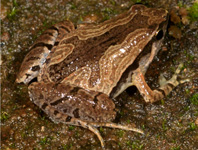Abstract
Stabilising microstructures and small organisms for microphotography can be frustrating. If it is desired to take photographs in water from structures just cleared in potassium hydroxide, some sort of stabilisation is necessary otherwise the structures drift. Similarly, specimens taken from glycerol or alcohol, or those placed in alcohol, drift even more as the alcohol evaporates. Bits of crushed coverslip, glass beads, micro pins and dobs of Vaseline® have all been used to help keep the structures in place. In an attempt to solve the problem of “drifting genitalia” a simple solution was inadvertently discovered. A method used for whole insects by Sam Droege and his colleagues of the United States Geological Survey (Droege 2016; USGS Bee Inventory and Monitoring Lab 2016) was adapted for use with insect genitalia.
References
Droege, S. (2016) Hand Sanitizer Macro-Photography. Available from: https://www.idigbio.org/wiki/images/d/d7/Hand_sanitizer_Droege.pdf (accessed 27 Sept. 2016)
Robillard, T., Gorochov, A.V., Poulain, S. & Suhardjono, Y.R. (2014) Revision of the cricket genus Cardiodactylus (Orthoptera, Eneopterinae, Lebinthini): the species from both sides of the Wallace line, with description of 25 new species. Zootaxa, 3854 (1), 1–104.
https://doi.org/10.11646/zootaxa.3854.1.1USGS Bee Inventory and Monitoring Lab (2016) Invertebrates in Hand Sanitizer. Available from: https://www.flickr.com/photos/usgsbiml/sets/72157631861396270/ (accessed 27 Sep 2016)

